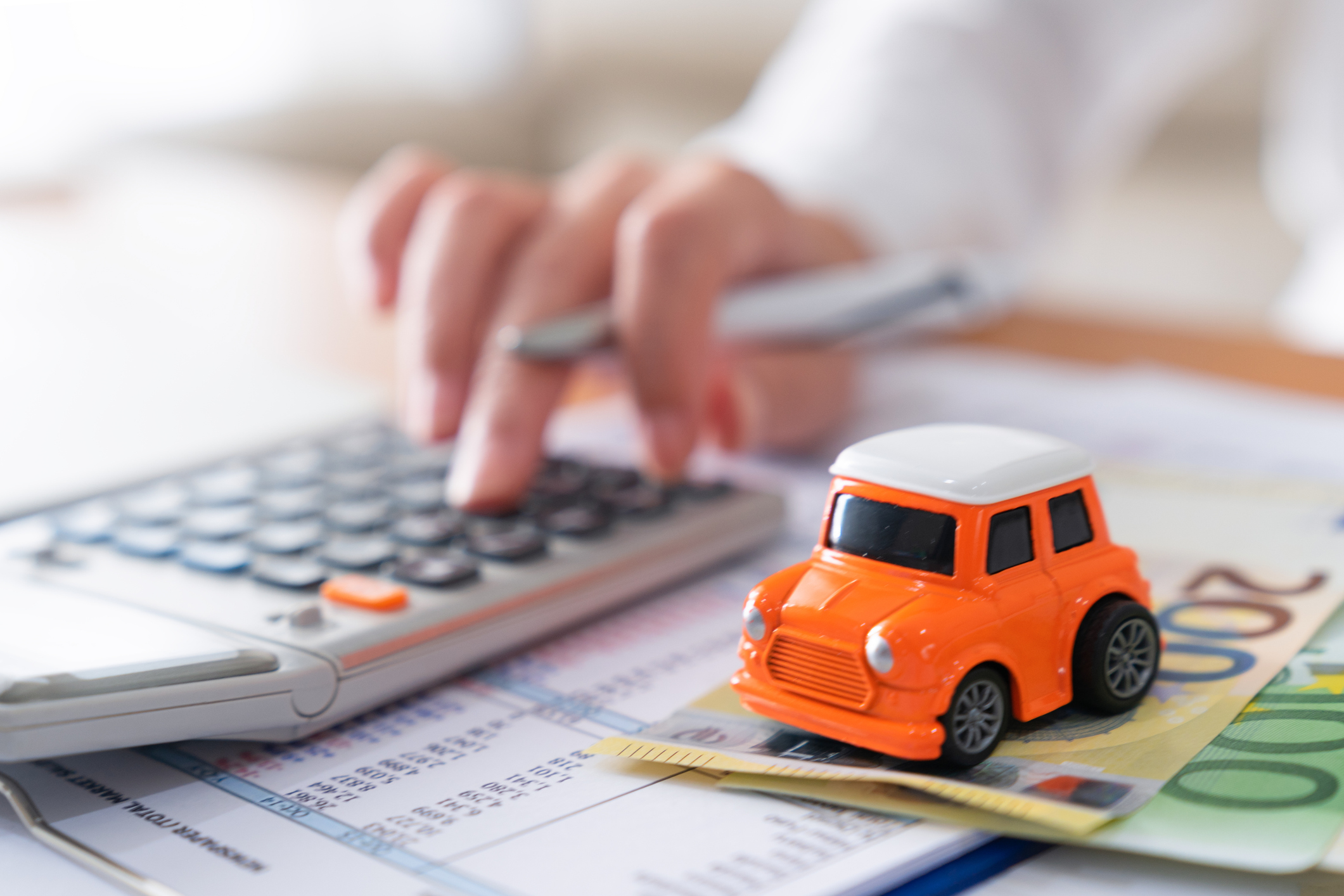Car tax rules are changing: what are the new vehicle excise duty rates?
The rules around vehicle excise duty changed in April and further reforms were introduced in the 2025 Autumn Budget. What are they, and how are they going to affect you?


Most drivers of electric, fuel and hybrid cars are now likely to have to pay Vehicle Excise Duty (VED) since new rules were introduced in April 2025, while owners of more expensive vehicles face the highest costs.
Electric vehicles were previously exempt from the vehicle tax but in the 2024 Autumn Budget, chancellor Rachel Reeves announced all drivers will now have to pay the fee.
This is on top of the pay per mile duty that Reeves proposed introducing in her 2025 Autumn Budget.
MoneyWeek
Subscribe to MoneyWeek today and get your first six magazine issues absolutely FREE

Sign up to Money Morning
Don't miss the latest investment and personal finances news, market analysis, plus money-saving tips with our free twice-daily newsletter
Don't miss the latest investment and personal finances news, market analysis, plus money-saving tips with our free twice-daily newsletter
Hikes in the rate of car tax for non-electric vehicles also come into effect from 1 April 2025.
Heavily polluting vehicles are now taxed at a higher rate. Diesel cars that emit more than 250g/km of carbon pay £5,490 – an increase of more than £2,000.
So what is VED and will you have to start paying it after April 2025?
What is Vehicle Excise Duty?
Vehicle Excise Duty is a yearly tax levied on everyone who drives a car, van, motorcycle, or any other vehicle in the UK.
Every year, the tax increases
in line with inflation. The new standard rate is £195.
While electric vehicle owners were previously exempt from paying the tax, drivers of all types of vehicles have had to pay it since April 2025.
How much VED will I need to pay?
The amount of tax you will need to pay depends on the type of vehicle that you drive, as well as when you registered it.
Previously, drivers of hybrid vehicles were able to receive a £10 discount on VED, but this is no longer the case as of 1 April 2025.
If your car was listed for more than £40,000 then you will also be liable to pay the 'premium car tax', known as the Expensive Car Supplement (ECS) This will add an additional £410 to your VED charge.
Reeves increased the threshold for the ECS on electric vehicles to £50,000 in her 2025 Autumn Budget. This will apply from April 2026.
You may also pay more or less VED in the first year compared to subsequent years.
Here’s a table showing how much VED you will need to pay depending on your vehicle’s carbon emissions in the first year it is registered. The following is only for vehicles registered after 1 April 2017:
CO2 Emissions Figure (g/km) | Rate (£) |
|---|---|
0 - 100 | 20 |
100 - 110 | 20 |
110 - 120 | 35 |
120 - 130 | 165 |
130 - 140 | 195 |
140 - 150 | 215 |
150 - 165 | 265 |
165 - 175 | 315 |
175 - 185 | 345 |
185 - 200 | 395 |
200 - 225 | 430 |
225 - 255 | 735 |
255+ | 760 |
From the second year onwards, you will only need to pay the standard rate of £195 annually.
If you drive a diesel car that does not meet the Real Driving Emissions 2 standard for nitrogen oxide emissions, you will have to pay the following rates in the first year:
CO2 Emissions Figure (g/km) | Rate (£) |
|---|---|
0 - 50 | 130 |
50 - 75 | 270 |
75 - 90 | 350 |
90 - 100 | 390 |
100 -110 | 440 |
110 - 130 | 540 |
130 - 150 | 1360 |
150 - 170 | 2190 |
170 - 190 | 3300 |
190 - 225 | 4680 |
225 - 255 | 5490 |
255+ | 5490 |
Note that if your vehicle is off the road you do not have to pay tax on it unless you intend on driving it again. You need to make a SORN (Statutory Off Road Notification) to avoid this levy.
If your vehicle was registered between any time before April 2017 you will have to pay rates that differ from the ones above. If you don’t know when your vehicle was registered, or how much car tax you will need to pay then you can check on the DVLA website.
Who pays the Expensive Car Supplement?
The Expensive Car Supplement (ECS) was introduced in 2017 to target high-end premium.
But the £40,000 threshold is increasingly catching more drivers.
A Freedom of Information (FOI) request by Marshall Motor Group found that the number of vehicles paying the ECS rose from 299,553 in the 2022/2023 financial year to 426,758 in 2024/2025 – a 42% increase in just two years.
Some of that is attributed to more people purchasing EVs - which tend to be more expensive, while other drivers are opting for newer high-end family cars.
EV drivers will benefit from a higher £50,000 threshold from April 2026.
It comes as the FOI data from the DVLA revealed that 119,203 EVs costing £40,000 or more were registered between April and September 2025 - generating more than £50m a year in ECS revenue for the government.
Hybrid models remain the most common fuel type in the luxury tax bracket. The number of hybrids subject to the supplement has more than doubled in two years, from 116,568 in 2022/23 to 247,613 in 2024/2025, the FOI revealed.
How can I pay less car tax?
Unless you are in receipt of certain disability benefits there is no way for you to pay less car tax outside of switching your vehicle to one that pays a lower rate.
There are only two ways you can be fully exempt from paying VED. You do not need to pay if you are in receipt of Personal Independence Payment (PIP) and receive the enhanced mobility element of the benefit. This is only available to people 16 or over who have both a long-term physical or mental health condition or disability and difficulty doing certain everyday tasks.
You also will not need to pay if you receive the higher rate mobility component of Disability Living Allowance (DLA).
There are other ways to drive down the overall cost of running your car, however. One such way is to take steps to reduce the cost of your car insurance – we have a list of 18 tips to drive down your premiums.
This is echoed by Julie Daniels, head of customer at Compare the Market, who said: “During this period of price rises in owning and running an EV, drivers who already own an electric vehicle should shop around for car insurance ahead of renewal to look for potential savings.”
Is vehicle excise duty the same as road tax?
Yes, VED is the same as road tax. It is also sometimes known as vehicle tax or car tax.
However, in order to drive your car on public roads, you are legally required to take out a car insurance scheme. This can be expensive, especially for young, new, or accident-prone drivers.
How to pay Vehicle Excise Duty
In order to pay VED, you must know your reference number. This can be found in:
- A recent vehicle tax reminder or ‘last chance’ warning letter from DVLA
- Your vehicle log book (V5C)
- The green ‘new keeper’ slip from a log book if you’ve just bought it
If you do not have any of these documents, you’ll need to apply for a new log book.
Once you have your reference number, you can pay your VED online using a debit or credit card or direct debit. You can also pay over the phone or at a Post Office.
Bear in mind that even if you do not have to pay any VED, you must still declare this online.
Does car tax auto-renew?
If when you first paid your car tax you opted for a direct debit, then your car tax will automatically renew. This means that the money will be taken directly from your bank account automatically and means that your car is always taxed.
If you did not opt for a direct debit, your car tax will not auto-renew. To ensure continued coverage, you will need to manually pay your car tax every year in the ways outlined above.
What other costs are increasing?
The introduction of car tax for electric vehicles also came at the same time as the Ofgem energy price cap rose by 6.4% in April and while it dropped over the summer, there was another 2% rise in October 2025.
Higher energy costs can push up the rate you pay when charging an electric vehicle, adding to the running costs.
The cost of running your car is not the only bill that increased in “Awful April”. Customers will start to see hikes in their energy, water, broadband, and mobile phone bills as the year progresses.
Get the latest financial news, insights and expert analysis from our award-winning MoneyWeek team, to help you understand what really matters when it comes to your finances.
Daniel is a financial journalist at MoneyWeek, writing about personal finance, economics, property, politics, and investing.
He is passionate about translating political news and economic data into simple English, and explaining what it means for your wallet.
Daniel joined MoneyWeek in January 2025. He previously worked at The Economist in their Audience team and read history at Emmanuel College, Cambridge, specialising in the history of political thought.
In his free time, he likes reading, walking around Hampstead Heath, and cooking overambitious meals.
-
 An AI bust could hit private credit
An AI bust could hit private creditOpinion Private credit is playing a key role in funding data centres. It may be the first to take the hit if the AI boom ends, says Cris Sholto Heaton
-
 8 of the best ski chalets for sale now
8 of the best ski chalets for sale nowThe best ski chalets on the market – from a traditional Alpine-style chalet in Switzerland to an award-winning Modernist building in Japan’s exclusive ski areas
